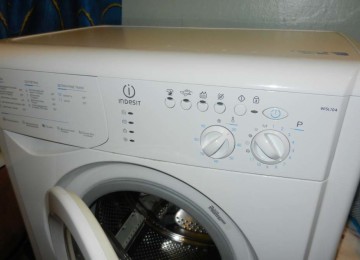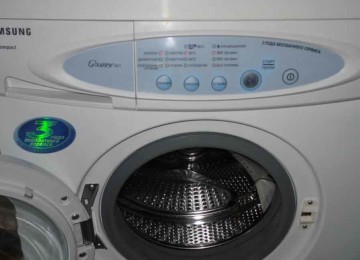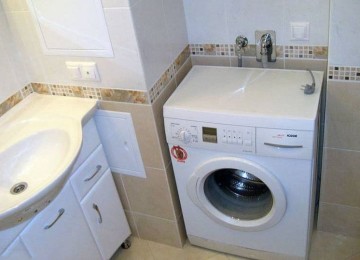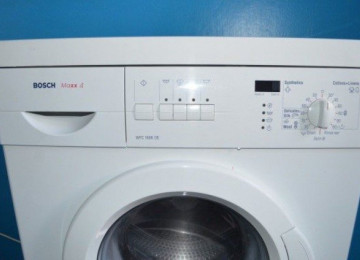 Increasingly for connecting the washing machine to the water supply use water sockets. They are aesthetic, convenient, compact, but in order to ensure maximum reliability of the connection, you need to perform the installation efficiently, and also not make a mistake in choosing the installation location. All parameters are important here, but most of all the height of the water socket for the washing machine. In many ways, the ease of operation, maintenance and possible repair of the device depends on this indicator.
Increasingly for connecting the washing machine to the water supply use water sockets. They are aesthetic, convenient, compact, but in order to ensure maximum reliability of the connection, you need to perform the installation efficiently, and also not make a mistake in choosing the installation location. All parameters are important here, but most of all the height of the water socket for the washing machine. In many ways, the ease of operation, maintenance and possible repair of the device depends on this indicator.
What is a water socket and what are its advantages?
Previously, washing machines were connected mainly using tee taps. This is convenient, but only in the case of open pipelines. If the pipes are hidden under panels, placed in a box, or simply run inside the walls, this solution is not suitable. A water socket is needed here.
In essence, this is one of the types of fittings used in plumbing. There are different options, but the simplest design looks like this: an elbow with threaded parts for connecting to the main line and connecting the consumer, which has lugs for fixing on the wall.At the location chosen for installation, this angle is secured with dowels, and a water supply pipe is connected to it. After sealing, only the threaded part peeks out from the wall, intended for connecting a washing machine and other household appliances.
Installing water supply outlets to your washing machine is a smart approach that offers a number of significant benefits, including:
- ease of installation;
- household appliances are connected after the repair is completed, which guarantees their safety;
- The process of replacing or transferring equipment is as simple as possible.
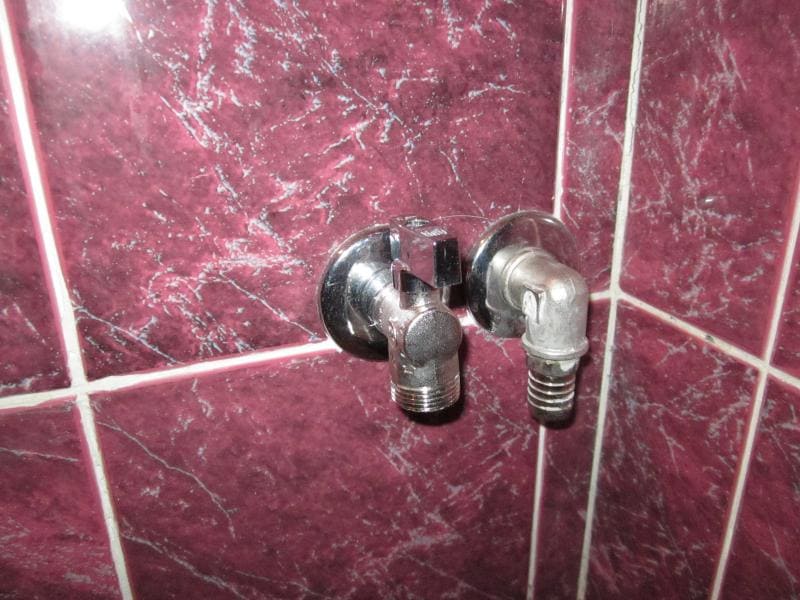
Types of water sockets
Modern industry offers accessories for every taste and budget. This is no longer necessarily a primitive square with ears; you can buy a stylish model that you won’t be ashamed to install in a bathroom with an expensive and high-quality renovation.
Based on the type of connection to highways, there are:
- single models;
- twin hard;
- paired on the bar.
The first type of water outlets is installed only on one main line, most often on cold water. These are sockets for washing and dishwashers. The other two are designed for mixers; they are connected directly to the cold and hot pipelines.
The materials used for such fittings are:
- steel and sanitary cast iron;
- copper-based alloys;
- plastic and composite materials.
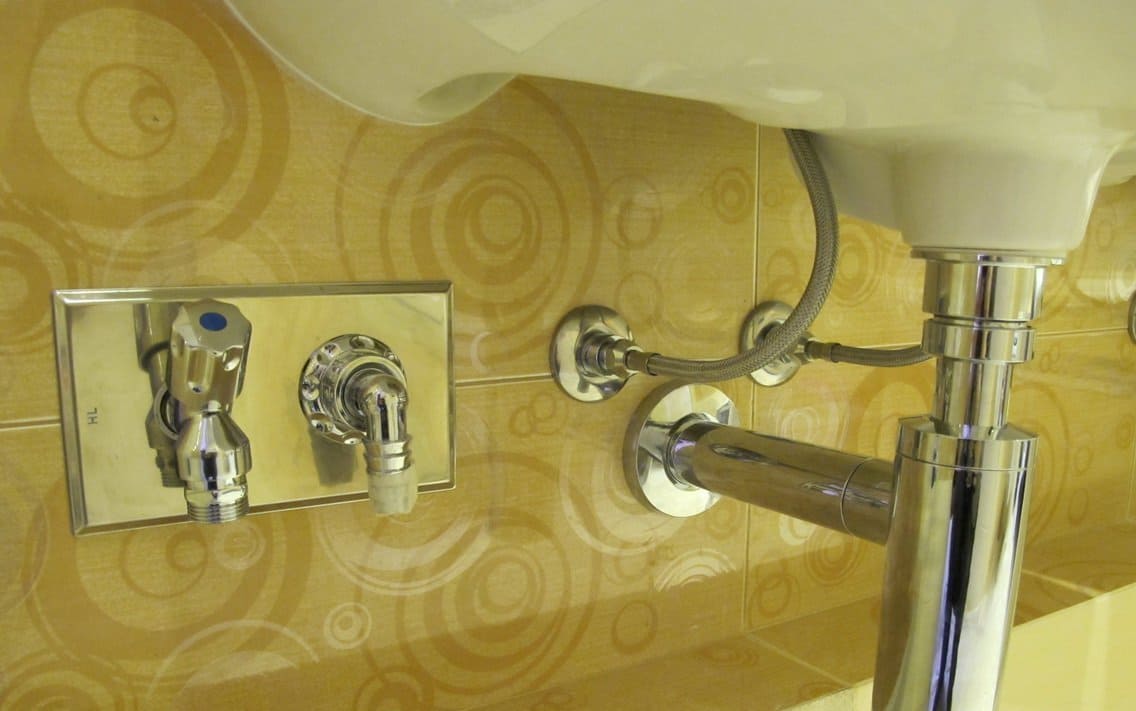
Classification of sockets by design features
The answer to the question of how to choose a water socket for a washing machine has long been found. It is necessary to take into account all their technical characteristics: shape, type, material, but first of all, the method of connection to the highway. Here you need to focus on the configuration of your water supply system, the material of the pipes and the availability of special tools.
Threaded models
As the name suggests, a thread is used to connect these products. This is a time-tested method. Made from high-quality material, this socket is guaranteed to last for many years. A threaded water socket is:
- long service life;
- excellent tightness performance;
- strength and reliability;
- ease of installation.
Crimp water sockets
The water supply connection is carried out using the crimping method. The basic part of the product is a collet, a special bushing that ensures the reliability and tightness of the joint. Such models have been used relatively recently, however, they have a number of significant advantages:
- low cost;
- long service life;
- ease of installation;
- wide range of models;
- Possibility of dismantling and reinstallation.
Self-locking
This type of sockets is characterized by ease of connection.For fixation, various locks are used, which are easy to close, securely hold the pipe, and, if necessary, are easily disconnected. Advantages of such products:
- completely collapsible design;
- possibility of reconnection;
- ease of installation;
- versatility.
Solder sockets
These water sockets are attached to a plastic pipe using a special soldering iron. The joint is even, smooth and reliable. Advantages of this method:
- minimum of parts used;
- compactness;
- long service life;
- tightness;
- low cost;
- versatility.
Choosing a location for installation
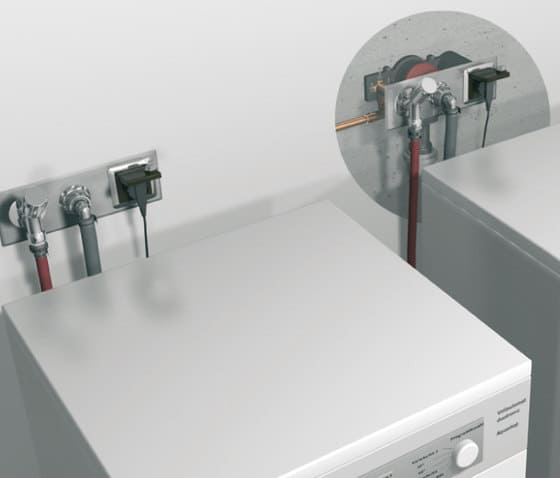
The first thing installation begins with is determining the optimal location. This is an important event, perhaps no less important than the connection to the pipelines and the installation itself. The location must meet a number of requirements.
- Distance to washing machine. The hose should reach the outlet freely, not be stretched, but not sag too much.
- Height. Determined by the dimensions of the washing machine. Experts recommend staying at the standard value of this parameter, namely 77 cm from the floor. However, the numbers may vary depending on the system parameters and the model of the washing machine.
- Access to shut-off valves. The tap that shuts off the water supply to the machine must be within reach.
- Reliability of socket fastening. To fix the water socket, complete fasteners are used; if necessary, you can reinforce it with corners or pads.
Methods for attaching a water socket

There are several common ways to secure a socket. The choice of one or the other is determined by the material of the walls, the features of the water supply in a particular apartment and the installation height of the outlet. In any case, before starting work, it is necessary to carefully inspect the surface of the wall at the site of intended installation. There should be no voids or cracks that could lead to failure of the fitting with subsequent leakage.
Pocket installation
This method is applicable when installing a water socket on a solid brick or concrete wall. A recess is made according to the size of the socket. It is not necessary to completely hide the fitting; it can peek out, which will later be “played out” during finishing work.
The socket is fixed using the supplied parts, after which they move on to finishing the walls.
On a wooden spacer
In the case of thin walls (4-6 cm), when it is not possible to make a full-fledged “pocket” and securely secure the socket, another method is used. A small recess is made, the fitting itself is attached to a board about 0.5 cm thick. The wood must be pre-treated with an antiseptic. The gasket is fixed in the recess.
Installation on a pad
This method is used in the case of a plasterboard wall. It is definitely not possible to attach the socket directly to the sheet; you must first make a support for it.As such, a frame made of wood or a metal profile is used. Its shape and configuration is determined individually.
Brief installation instructions
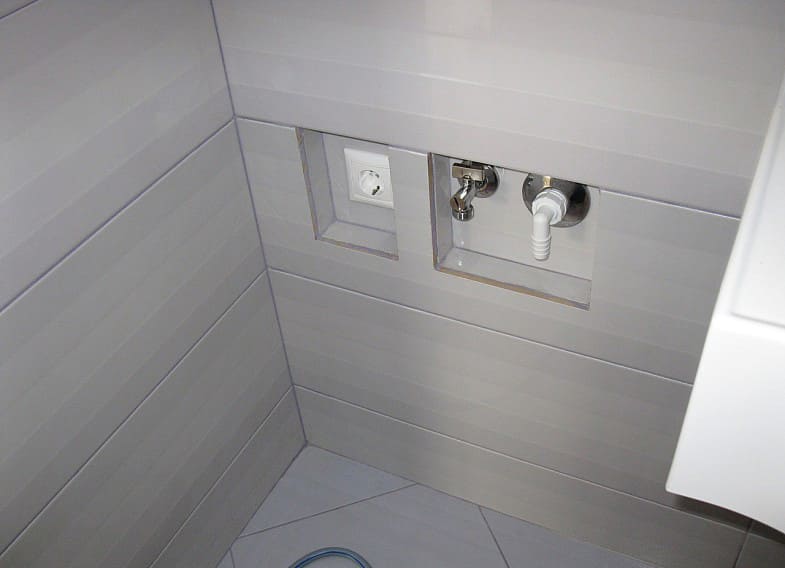
Any work with plumbing requires a responsible approach and compliance with safety regulations. Installation is carried out in accordance with regulations governing the laying of intra-house water supply systems, indentations and permissible deviations according to SNiPu 3.05.01-85.
As a rule, sockets are installed during a major renovation of a bathroom, but sometimes only a local insertion is performed. In any case, the work is performed according to the following algorithm.
- Turn off the water at the entrance to the apartment.
- Preparation. Remove the old coating from the wall, clean it, and if necessary, repair the surface.
- Marking. Using a pencil, mark the pipe routes, installation locations and points of attachment of water sockets directly on the wall.
- Drilling. Use a drill with a concrete drill to drill holes for fasteners.
- Wall chipping. Make recesses for fittings, and, if necessary, a recess for pipe routes.
- Fitting parts on site. Temporarily install an outlet and check connectivity.
- Installation of a water socket. Connect the socket to the pipelines and install it in place.
- Fixation of pipes and fasteners.
- Assessment of the quality of work performed.
- Sealing voids around the outlet.
Almost everything is ready, all that remains is connect the washing machine hose, open the water supply and you can start washing. Of course, if the installation is carried out during a major overhaul, you will have to wait until the finishing work is completed.
Water socket - This is the best way to connect the washing machine to the water supply. A wide range of models, ease of installation - all this makes this option optimal in a number of cases. The socket is convenient to use, it will protect against leaks and, what is also important, you can do all the work yourself, and this is a significant saving plus a guarantee of quality.






